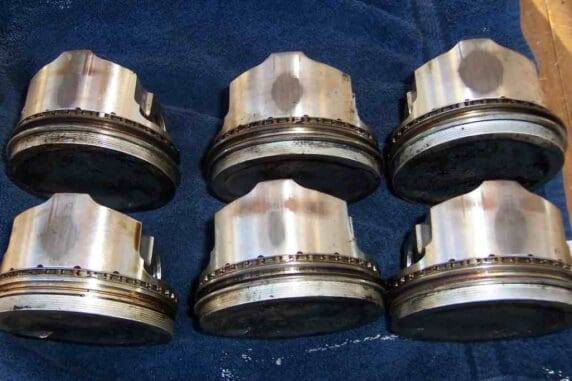
Vacuum leaks in today’s computer controlled engines, can cause very serious engine damage.
When an engine that has computer controlled spark and fuel systems, have vacuum leaks, the following events occur.
Because, these leaks pull in outside air, the fuel air ratio is altered, to a lean condition. The exhaust oxygen sensors, record the lean air fuel condition. Finally, they report this to the computer.
So, any vacuum leaks can cause the computer to tell the fuel system “hey, we need more fuel”. The result of this is an oversupply of fuel; that can result in a “fuel wash” condition in the cylinder.
The fuel diluted the oil on the cylinder walls, until metal to metal contact occurs; resulting in scuffing of the rings and cylinders.

So, How To Quickly Find Vacuum Leaks ( NOTE – NOT THE SAFEST WAY ):
- A faster technique for finding leaks, is to get a bottle of propane.
- First, attach a length of rubber hose to the gas valve.
- Open the valve so you have, a steady flow of gas.
- Then hold the hose near suspected leak points, while the engine is idling.
- The resulting “correction” in the air/fuel ratio, should cause a noticeable change, in idle speed and/or smoothness.
(Note: on engines with computerized idle speed control, disconnect the idle speed control motor first).
You Could Also Use Aerosol Carburetor Cleaner. AGAIN ( NOTE – NOT THE SAFEST WAY )
Solvent is extremely flammable, so do not smoke or use it, if there are any sparks in the vicinity. Spray the solvent on suspected leak points, while the engine is idling. The idle speed will suddenly change and smooth out.

TIP:
First, get your hands on a scan tool. Then, look at the Short Term Fuel Trim (STFT) value, while you are checking suspected areas.
When cleaner or propane is sucked in through the leak, you will see a momentary drop, in the (STFT) reading.
This confirms you have found a leak (keep checking, because there may be multiple leaks!).
Conclusion
So, vacuum leaks are often the elusive needle in a haystack. And, if it is not a hose leaking vacuum, but something else such as a gasket, throttle shaft, injector O-rings. Then, you may never find it using this technique.

So, we have covered the quick and unsafe way to find leaks. But, we do it differently and you can read more about it here.
Vacuum Leak Detection – The Safe Way to Find Leaks
Above all, start with a visual inspection. Consequently, you may not have to do any testing, if you find a loose or cracked hose.
BY DANNY BENDER




